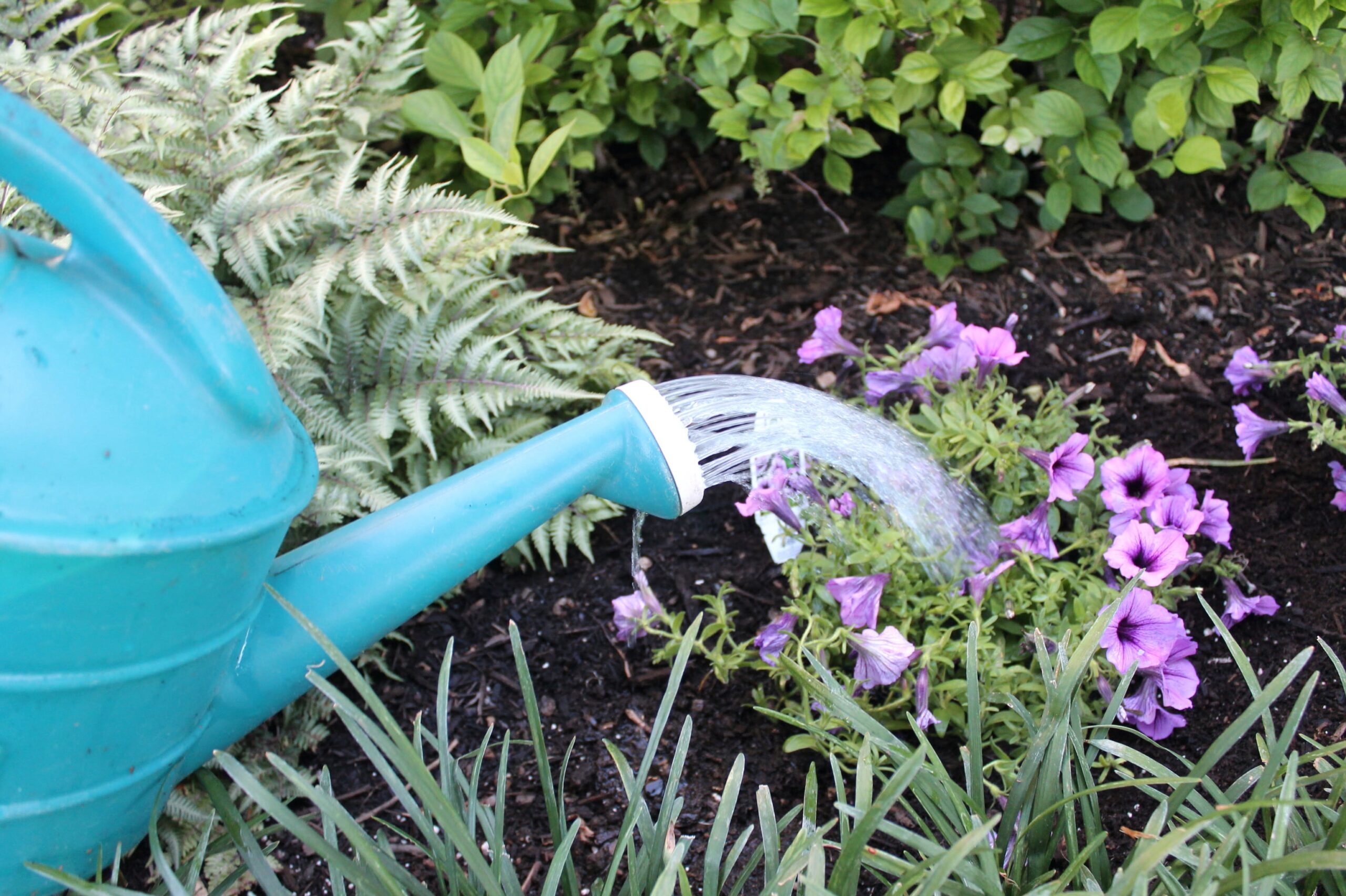We are approaching the two hottest months of the year, when plants and lawns can fry at temperatures close to triple digits, thanks to this week’s startling onset of scorching heat.
When daily high temperatures get above 86 degrees, many plants begin to suffer. Plants then transition from growth to survival. Water demands rise, leaves wilt and stop producing chlorophyll, and flower buds wither and abort.
In general, plants from regions where extreme heat is common—such as Africa, the Mediterranean region of Europe, Texas, Mexico, etc.—struggle more than those belonging to cooler temperatures.
-
Read more on how high heat affects plants
While gardeners are unable to use outside air conditioning, there are a few ways to lessen the chaos of summer. If nothing else, avoiding five specific tasks prevents the situation from growing worse.
This is the first time that your previous hard work has paid off. Generally speaking, gardeners who take the time to choose hardy plants, place them in appropriate locations, and loosen and improve their poor soil before planting do better than those who take shortcuts.
There are two reasons for this: 1.) healthy plants in healthy houses are better able to tolerate stressors like high temperatures, and 2.) plant roots can more easily penetrate loose, better soil than compacted clay, allowing for more roots to absorb moisture from the soil.
If you didn’t give yourself those edges, it’s a bit late now, but remember to do so before you start your next planting project.
While you’re at it, consider planting a couple more trees. Under a tree canopy, temperatures are frequently 10 degrees or more lower than they are in direct sunlight.
What you may expect in the upcoming weeks:
1.) Water. Your best defense against heat is this. Water not only temporarily cools the soil and the surrounding region, but it also keeps plant roots from drying out to the point where they die.
You can provide enough moisture to sustain plants, but you won’t be able to replicate the deep, even moisture that a good, soaking rain provides.
Watering enough to keep the soil moist just below the roots and as far out as the roots have spread is the aim.
That typically requires more water than you may realize, particularly for trees and shrubs, which require more water than smaller flowers and vegetables due to their larger root systems.
The majority of garden centers and catalogs sell cheap soil meters that provide readings on the soil’s moisture content that are a few inches deep.
If not, simply dig your finger into the dirt. Get out the hose if the soil is dry a few inches below the surface or if it is so hard and dry that you can’t even stick your finger in it.
-
Read George s eight summer plant-watering hacks
-
Read George s post on why it s so important to get watering right
2.) Watch. Watch for early indicators of heat and drought stress in your plants, such as drooping leaves, reduced growth, and a loss of leaf color.
Don’t put off watering until the leaves have begun to wilt severely or turn brown around the edges. Most plants that wilt indicate that stress is already present.
Newly planted plants should receive special attention because they have less roots and will go through the tubes more quickly than established ones. You should also pay close attention to any pricey or cherished plants that you don’t want to lose.
Additionally, keep an eye on plants in your yard’s warmest microclimates, such as those beside asphalt driveways, white or light-colored stone walkways, and other highly reflective surfaces, including white vinyl fences or siding facing west.
On hot, sunny summer days, the likelihood of plant damage is increased by reflected sunlight.
Be mindful that plants may not always indicate that they are on the verge of dying from stress. Vegetables, annual flowers, and potted plants are generally adept at wilting to obtain treatment, but evergreens can not exhibit any symptoms until they eventually start to turn brown all over. Then it’s too late.
In addition to providing enough water, you can help new or struggling plants by temporarily shielding them from the afternoon sun with a net or shade cloth.
Over bare soil, a layer of mulch will help keep it cool and retain moisture during the hot summer months.Weigel, George
3.) Mulch. When exposed to sunlight, bare soil is especially vulnerable to rapid heating, which, at high enough temperatures, can damage plant roots.
A two- to three-inch layer of wood chips, shredded hardwood, shredded bark, decayed leaves, pine needles, or similar organic matter provides an insulating layer to cool the soil and slow the evaporation of soil moisture.
Now is an excellent time to add mulch if you don’t already have it, preferably after a thorough soaking.
-
Read George s PennLive column on how to keep young plants alive in a hot Pennsylvania summer
The next best thing you can do for plants during a summer heat wave is nothing, except than watering, observing, and mulching. The following five yard tasks are best postponed until cooler weather returns:
1.) If the grass isn’t growing and the soil is dry, don’t mow the lawn. Longer blades are advantageous because they provide shade, which keeps the soil cooler and aids in moisture retention. Grass blades will also become browner and lose moisture more quickly if you cut them.
-
Read George s seven tips on how to mow lawns
2.) Avoid fertilization. This includes most trees, shrubs, evergreens, and perennials as well as the lawn.
For one thing, heat- and drought-stressed plants don t use much (if any) fertilizer during a hot, dry spell because they ve refocused from growth to survival.
Second, the consequences of drought stress and harm might be accelerated by the salts in fertilizers.
Exceptions: it s OK to keep fertilizing container plants, vegetable gardens, annual-flower beds, and other actively growing plants that you re watering regularly.
3.) Avoid pruning. As with mowing, fresh plant wounds increase the amount of precious moisture leaving the cut foliage and stems.
Pruning also can encourage new growth, which is counter-productive when plants are in survival mode and trying to protect and conserve instead of invest moisture on new growth.
Dead wood can be removed from trees and shrubs, and so can damaged or ratty foliage on the perennials. But wait until cooler, damper times to cut back shrubs, prune hedges, and do any other extensive pruning work.
4.) Don t spray. The adherence agents and oils in most liquid pesticides can heat enough in the summer sun to damage plant foliage. Some herbicides and insecticides also sometimes do unintended damage (or are ineffective) to plants that are under heat stress.
Check the labels for application warnings. You might be surprised to see how many products advise not to apply when temperatures are more than 85 degrees.
If sprays are needed before a cooler spell happens, at least wait until evening to apply.
5.) Don t plant or transplant. It s possible to plant new plants or move wayward ones in summer, but it s not the best time. Survival odds go down as the temperatures soar into the 90s, and you ll be more on the hook to keep the soil damp in those early weeks.
This goes for grass seed, too. You can get grass up and growing in summer, but it s much more of a watering challenge than if you wait until right after Labor Day.
If you must plant/transplant in summer: 1.) do it in the evening or during a cloudy spell, and 2.) be ready with the hose to keep the soil consistently damp afterward.
-
Read more on planting in summer
-
More gardening tips: George s
Pennsylvania Month-by-Month Gardening
book
Gardening with George Weigel
-
This head-turning new hydrangea has big cranberry-red flowers: George s Plant Pick of the Week
-
How s your yard doing bee-wise?
-
Are your trees raining Cheetos dust ?
-
12 perennial flowers that can take the heat






